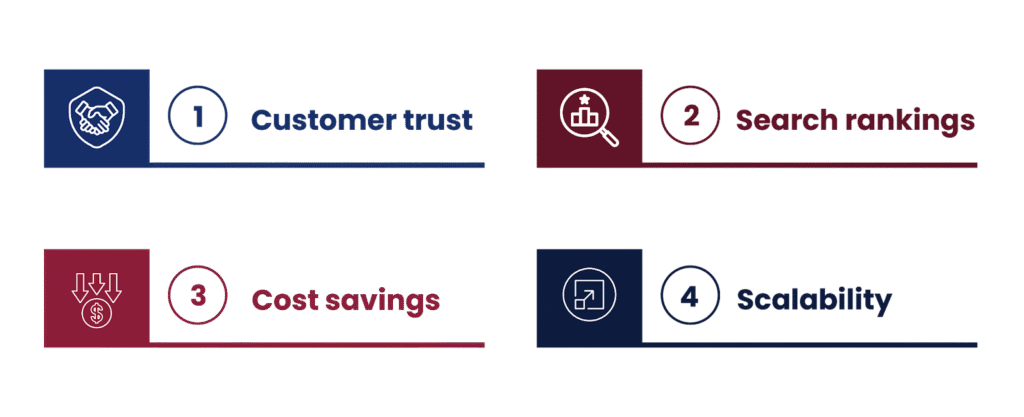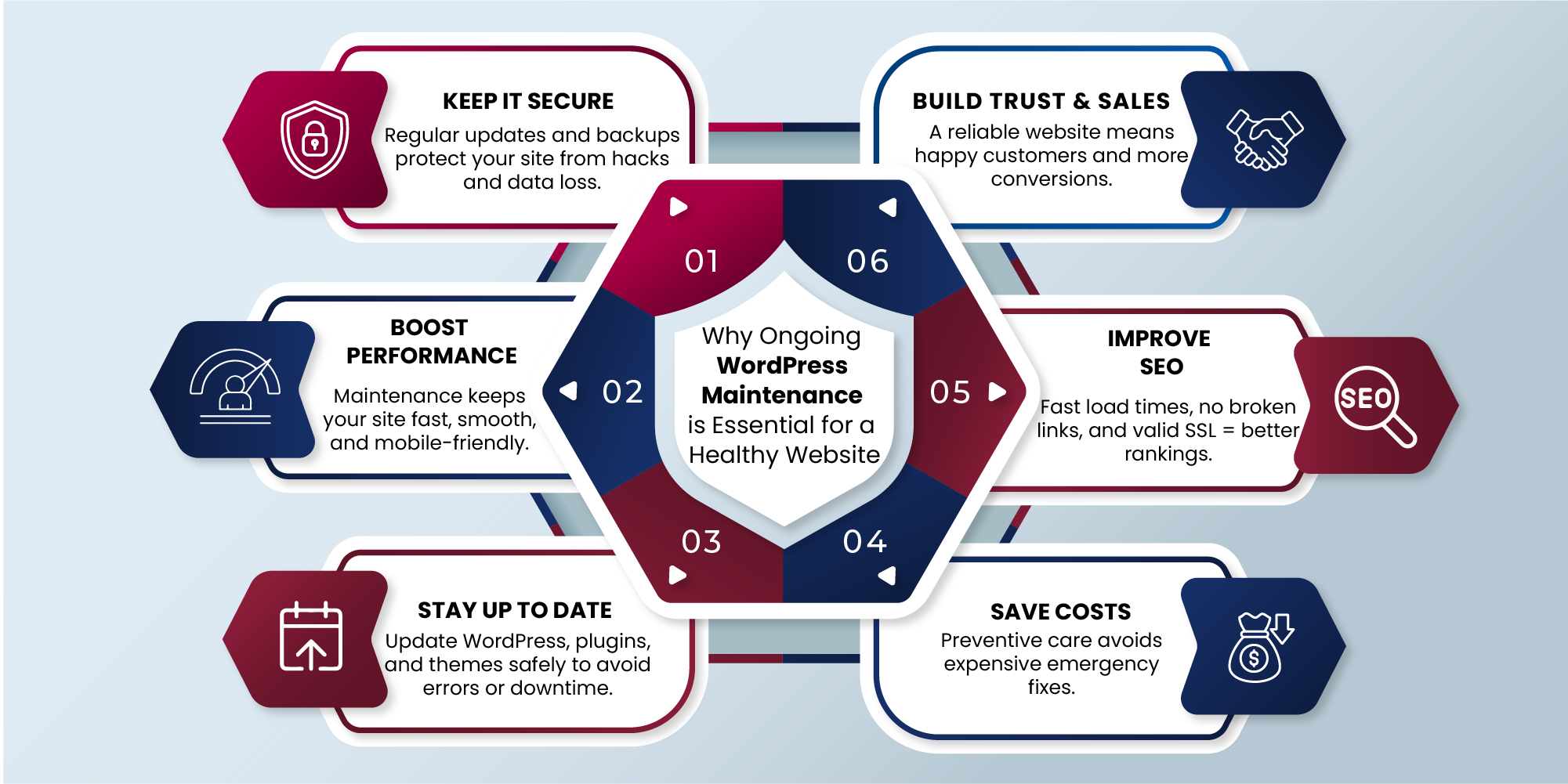A website is one of the most valuable assets a business owns. It’s where customers first discover you, learn about your services, and decide whether to trust your brand. But unlike a storefront, websites don’t show clear warning signs when something goes wrong. Plugins fall out of date, security gaps open, and performance slows often unnoticed until they cause real damage.
Like any other CMS, a WordPress site is never complete. It runs on themes, plugins, and a core system that all require regular upkeep. Without it, small issues build up into major problems: sluggish load times, broken features, and vulnerabilities that leave the door open to attacks.
For businesses that depend on their websites to generate leads, process sales, or establish credibility, ongoing maintenance isn’t optional. It’s what keeps a site secure, reliable, and ready to perform.
Keeping the Foundation Secure

Every WordPress site is a target for cyber threats, no matter the size of the business. Hackers actively search for outdated plugins and unpatched software to exploit. That’s why ongoing maintenance matters. It ensures your site stays protected with the latest updates, security scans, and backups that safeguard your data. Without that, a single gap can compromise sensitive information and damage your reputation.
Performance That Matches Expectations

Your website is often the first impression a customer gets. If it lags, crashes, or fails to load properly on mobile, most visitors won’t stick around. Over time, as content and features are added, performance naturally dips unless it’s actively managed. Regular maintenance keeps things running smoothly by optimizing databases, reducing clutter, and monitoring speed across devices. A fast, seamless site isn’t just good design, it’s a business requirement.
Why Regular Updates Matter

WordPress, themes, and plugins are always evolving. Updates improve security and add new capabilities, but they can also introduce conflicts if applied without care. Skipping them isn’t safe, but applying them blindly isn’t either. Maintenance creates a structured process: testing, updating, and fixing issues before they ever affect the live site. That balance keeps your website both current and stable.
The Business Value of Maintenance
The technical side of WordPress upkeep is critical, but what it delivers for your business is just as important:

- Customer trust
A failed form or a broken checkout is immediate proof to a customer that something is wrong. People expect transactions and interactions to work; when they don’t, conversions are lost and confidence drops. The consequences are direct: abandoned sales, support volume, negative reviews, and a lower likelihood of repeat business.
Key maintenance actions:
- Regular end-to-end testing of forms and payment flows (automated where possible).
- Transaction and integration monitoring (payment gateway, CRM, email providers).
- Error logging and alerting for failed submissions so issues are fixed before many users see them.
- Backup and recovery checks to restore functionality quickly if something breaks.
- Search rankings
Search engines evaluate site health as part of ranking: speed, uptime, mobile usability, and clean crawl paths all matter. Technical problems like slow pages, broken links, missing sitemaps or expired SSL cause crawl errors and reduce visibility. Ongoing maintenance prevents these problems and preserves the value of your SEO work.
Key maintenance actions:
- Monitor Core Web Vitals and page speed; address slow templates, oversized images, and render-blocking assets.
- Check for broken links and errors, and keep your sitemap and robots.txt file updated.
- Ensure SSL certificates remain valid and mobile responsiveness is tested after updates.
- Maintain structured data and canonical tags so search engines index content correctly.
- Cost savings
Routine maintenance is predictable and budgetable while emergency fixes are not. When sites fail during peak activity, the financial and reputational impact escalates fast. Regular upkeep reduces incident frequency, shortens recovery time, and lowers overall cost of ownership.
Key maintenance actions:
- Scheduled backups with periodic restore tests so recovery is reliable and fast.
- Staging environments and pre-release testing to catch issues before they hit production.
- Patch schedule and prioritization policy to address high-risk updates immediately.
- Documented incident response procedures to minimize downtime and developer hours during crises.
- Scalability
Growth changes demands: more traffic, more transactions, more integrations. A site that hasn’t been tuned for scale will lag and conflict will surface as load increases. Proactive maintenance prepares the site for growth so new initiatives don’t trigger breakdowns.
Key maintenance actions:
- Load and performance testing before high-traffic events and major feature releases.
- Caching strategy, CDN use, and asset optimization to reduce server load.
- Database optimization (indexes, pruning, query review) and periodic cleanup of obsolete data.
- Plugin audits and lightweight alternatives for heavy functionality.
Avoiding the High Cost of Neglect

The businesses that struggle most with their websites are often the ones that treat maintenance as optional. A site going down during a product launch, an outdated plugin creating a security hole, or a slow checkout page driving customers away are all preventable with regular care. What looks like a cost-saving move at first quickly turns into lost revenue and damaged credibility.
WordPress Maintenance with The Digital Edge
Your website should be an asset, not a liability. The Digital Edge provides WordPress web development services designed to keep websites fast, secure, and reliable. Our team handles the updates, performance checks, backups, and monitoring so you never worry about downtime.
With the right maintenance, your website becomes a dependable part of your growth strategy always ready to serve your customers and represent your brand.
Contact The Digital Edge today to keep your WordPress site healthy and built for the long run.

